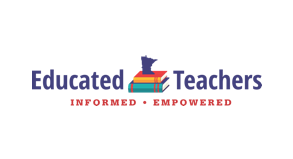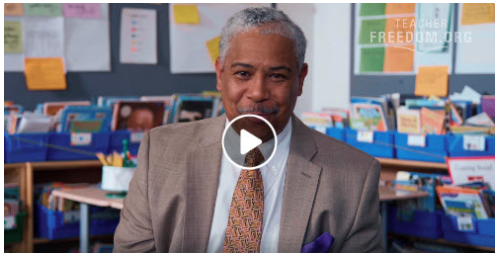
Union membership is a personal decision. And educators are exercising their newly restored right to not financially support a union for a variety of reasons. Below are the Top 5 Reasons Educators Opt-Out of Union Membership courtesy of the Teacher Freedom project.
Do any of these…

More than one-third of teachers would prefer to negotiate salary and benefits for themselves, according to a national survey by the Teacher Freedom project. The survey asked 2,000 teachers in the 22 states most impacted by Janus v. AFSCME, including Minnesota, for…

Nearly 1 in 5 teachers disagree with many union policies but don’t speak out to avoid offending their colleagues who support the union, according to a survey by the Teacher Freedom project. A breakdown of responses shows male teachers and Republicans are more likely to disagree…

Teachers in Minnesota’s K-12 schools are exclusively represented by a union and collective bargaining framework that has not been evaluated by teachers or lawmakers since its formal enactment in 1971. Teachers have not had the opportunity to vote for, or against, union representation in…

Despite the rights of teachers being restored in the Janus v. AFSCME decision, many are unaware of what these rights are. Teachers are also hearing a lot of misinformation concerning the Janus decision and what it means for them. The Teacher Freedom project has created a Declaration of Educator Association Rights…

Read an interview with teacher Rebecca Friedrichs, author of "Standing Up to Goliath" on why she decided to resign from union membership and leadership.

After years of effort, Minnesota’s teacher licensing system was overhauled with the adoption of a four-tiered licensure system in 2017. These reforms brought effective improvements to a badly broken and complex licensing system.
But several legislators have proposed changes to the newly adopted licensing rules in the House (HF 1329)…

Yesterday we shared a video made by teachers for teachers addressing a misconception about union membership and job security.
Another mistaken belief is that an educator’s compensation or health insurance will be in jeopardy if he or she isn’t a union member. Both salary and benefits…

Teachers often worry about job security, but in doing so many believe certain misconceptions about seniority and tenure. One common belief is that tenure and seniority are in jeopardy if teachers aren’t members of the union. This simply is not true.
Thanks to the Teacher Freedom project,…